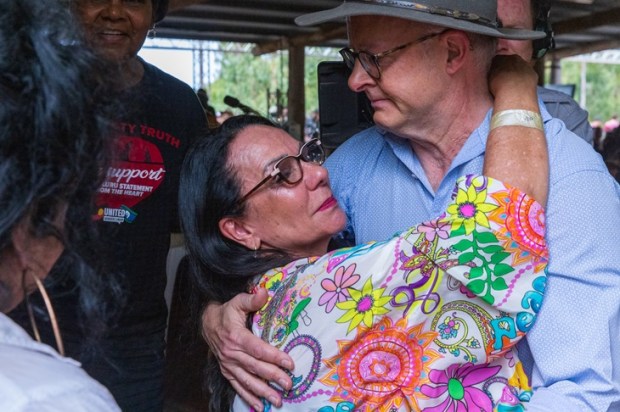Australians of all political persuasions rubbed their eyes and opened their curtains this week with one hell of a hangover. As the nation recovers from a fiery month of debate over the date of Australia Day, you’d be forgiven for thinking little else significant happened in Indigenous affairs throughout January.
During all the kerfuffle media, politicians and activists alike talked about nothing but the ramifications of changing the date — either positive or negative. Flags were flown, insults thrown, and referendums touted as headlines were dominated by one thing, and one thing only.
To a certain extent, it seems to be in the nation’s character. We often get caught up in the frenzy of a polemic political debate. Think Tony Abbott’s Indigenous ‘lifestyle choices’ comment, or last year’s citizenship saga. When an issue takes centre stage, we tend to zero in on it and forget about the bigger picture.
However, for those who keep a closer eye on Indigenous affairs, it was hard not to notice that several highly significant developments in the Indigenous policy debate were overlooked during the Australia Day turmoil.
On January 11 the Closing the Gap Refresh website was launched, encouraging people to make submissions for a major overhaul of the decade long government strategy. Given that only one of the seven targets is on track to succeed you’d think this would warrant significant attention.
The refresh represents a profound opportunity to reshape some of the core foundations of Indigenous policy. The failings of the current strategy should have begun to be dissected and the lessons begun to be learned.
Perennial issues such as home ownership and private tenure on Indigenous land, small business and self-employment, and the ongoing inefficiency of program delivery should have been front and centre of discussions on a new approach.
Take Indigenous small business ownership, for example. Aboriginal people are self-employed at a third of the rate of the rest of Australia. My research has demonstrated that closing this gap can go a long way to reducing welfare dependency and encouraging active participation in the economy. However, such issues are drowned out by the Australia Day rancour.
Similarly, on January 17 another government consultation was released — this time opening a review of the remote employment strategy, known as the Community Development Program.
The history of CDP is usually one of headline-hogging controversy. Providers listing dead people and prisoners on their books to gain more funding, participants completing ‘fake work’ to earn welfare payments, and allegations of racial discrimination have all tainted a policy that is in desperate need of a re-think.
However, these issues and many more gained little traction when the conversation got serious in January. The nation was tanked-up on a fractious issue that — while important — will have no tangible impact on the outcomes of the portion of Indigenous people who are so far behind the rest of Australia.
So now the change the date debate has been had for another year, it’s time to resume focus on the most pressing issues:
How can remote communities become active participants in the Australian economy? Encouraging small business ownership and targeting local service gaps would be a start.
For the next decade of the Closing the Gap strategy to achieve significantly more than the last, targets should take into account interdependent factors that can boost a wide range of outcomes. For example, closing the gap in home ownership will contribute to an improvement in other key areas such as health and education.
And Indigenous program and service delivery must be evaluated properly to create greater efficiency and efficacy. In 2017, only eight per cent of Indigenous programs were being evaluated. Implementing an overarching and continuous evaluation framework would eliminate inefficiencies and save taxpayer dollars.
These sorts of debates often need a catalyst. As the nation awakes from its Australia Day hangover, the Prime Minister’s annual Closing the Gap speech in February would be a good place to start.
Charles Jacobs is a Policy Analyst in the Centre for Independent Studies Indigenous Research Program and author of the report: Risky Business: the problems of Indigenous business policy.
Got something to add? Join the discussion and comment below.
Got something to add? Join the discussion and comment below.
Get 10 issues for just $10
Subscribe to The Spectator Australia today for the next 10 magazine issues, plus full online access, for just $10.


























Comments
Don't miss out
Join the conversation with other Spectator Australia readers. Subscribe to leave a comment.
SUBSCRIBEAlready a subscriber? Log in